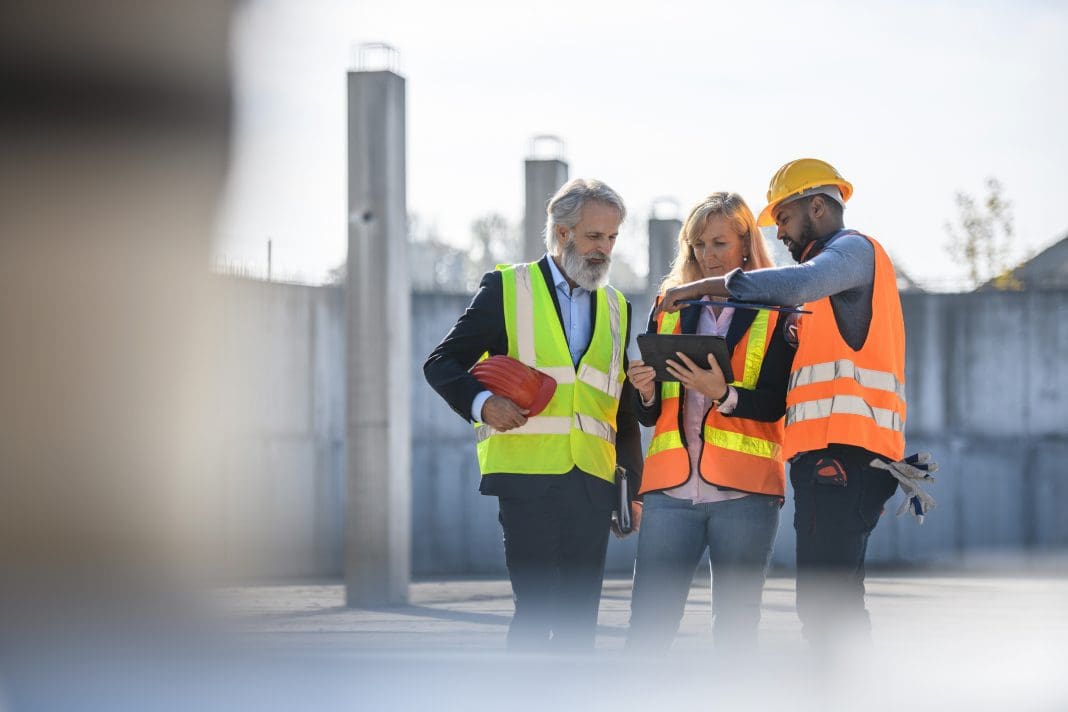In the second part in this series of Newforma on-demand webinars, technical solutions lead Carl Storms explores AECO collaboration technology and how to use it to your advantage
In the previous article, we explored the role of AECO technology coordination, covering coordination definitions, organisational strategies, and a construction technology gamification case study to boost team engagement.
In the second article of this three-part series, we will cover:
-
- How to use AECO technology to your advantage
- AECO collaboration vs coordination
- Collaboration quarks
- How do you keep everyone on the same page?
- Knowledge shift – learning vs teaching
- Knowledge transfer: Gamification and technology sharing
How to use AECO collaboration technology to your advantage
One significant aspect of working with technology is ensuring that you choose the right technology for your project.
Using technology should enhance the project, not distract from it. Just because a technology has an appealing feature doesn’t mean it’s suitable for your project.
It’s essential to ensure that whatever technology you deploy is appropriate for the specific project at hand.
While a tool might be fantastic for other projects, it might not be the best fit for your current one.
Moreover, even if a tool is efficient, if it’s challenging to understand, people won’t use it.
Quick adaptation is key, and sharing technology is equally important. This can help colleagues in the AECO industry who are struggling with digital tools, foster mutual support.
A standout comment from a panel discussion highlighted the value of addressing issues digitally early on: “I’m okay with more RFIs during coordination if it leads to fewer change orders in construction.”
Collaboration vs Coordination: What is AECO collaboration?
Whilst coordination focuses on the organisation of people or groups to work efficiently, collaboration involves two or more parties working together towards a common goal.
Coordination manages data independently through task checklists, while collaboration fosters teamwork and feedback to ensure understanding, overcome challenges, and achieve project goals.
Collaboration quarks: Collaborative environments are beneficial but challenging to establish
Not everyone may initially embrace collaboration, and understanding their concerns is crucial.
Some might struggle due to unfamiliar technology or lack of experience with a particular project type, which is why offering support and guidance can help integrate everyone into the collaborative process.
It’s essential to remember that collaboration involves both giving and receiving help. A popular analogy depicts the evolution from basic drafting to sophisticated data-driven processes, emphasising the importance of collective advancement.
Maintaining alignment among team members is challenging but essential. A concise BIM execution plan and coordination schedule can aid in this alignment.
Educating project owners about the benefits of BIM and managing expectations ensures smoother project execution.
The principle is simple: you get what you pay for, not just what you ask for.
Knowledge shift: Learning vs teaching
Moving beyond coordination and collaboration, the focus shifts to a knowledge shift rather than knowledge transfer.
With evolving technology and generational disparities, there’s a need to rethink how we share knowledge.
Learning approaches range from conventional book-based methods to contemporary social media and hands-on experiences, with the latter proving crucial in bridging the theory-practice divide.
AI construction tools and gamification
Teaching methods in the AECO industry vary widely, from traditional written methods that rely on textbooks and lectures to modern AI tools that use algorithms and machine learning.
Gamification for construction technology has emerged as a popular approach to enhance user engagement and accelerate the learning process in construction technology education.
Practical demonstrations play a crucial role in providing hands-on experience to learners. These demonstrations allow team members to apply theoretical knowledge on-site, reinforcing their understanding and skills.
Technologies such as AR, VR, and AI construction tools can aid trainees in the following:
- Familiarising themselves with job sites
- Providing advanced site orientation
- Offering hands-on virtual experiences
- Enhancing pre-job training and preparation.
Micro-learning and community libraries are effective methods for knowledge dissemination, as everyone has access to essential information and resources.
This promotes a culture of collaboration and informed decision-making and can ensure ongoing evolution and prosperity in the construction industry.
Discover how Newforma can improve your collaborative information management, project management, and BIM coordination: request a demo today.
Stay on top of the latest construction industry events by checking out our upcoming PBC Today webinars.














